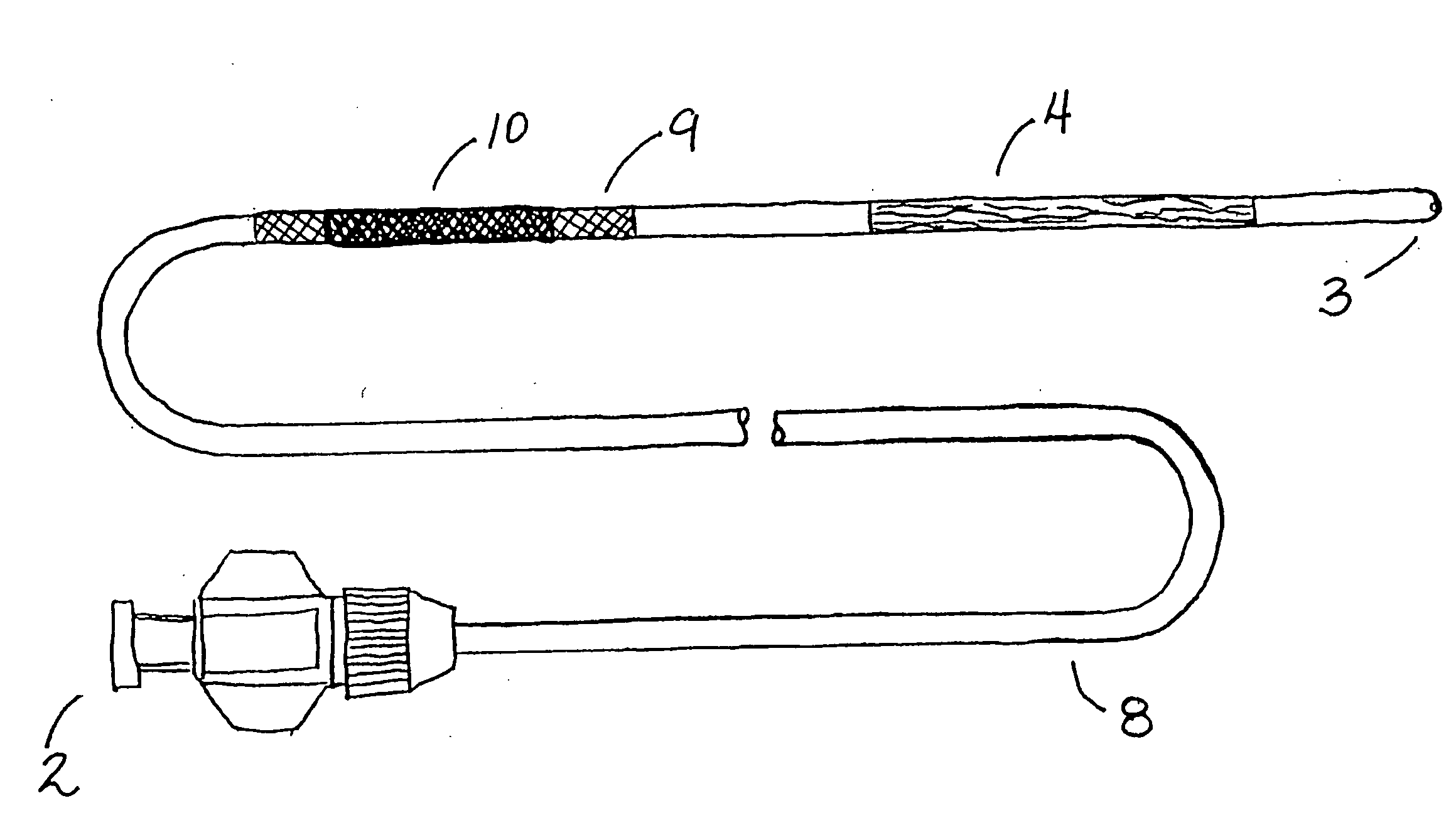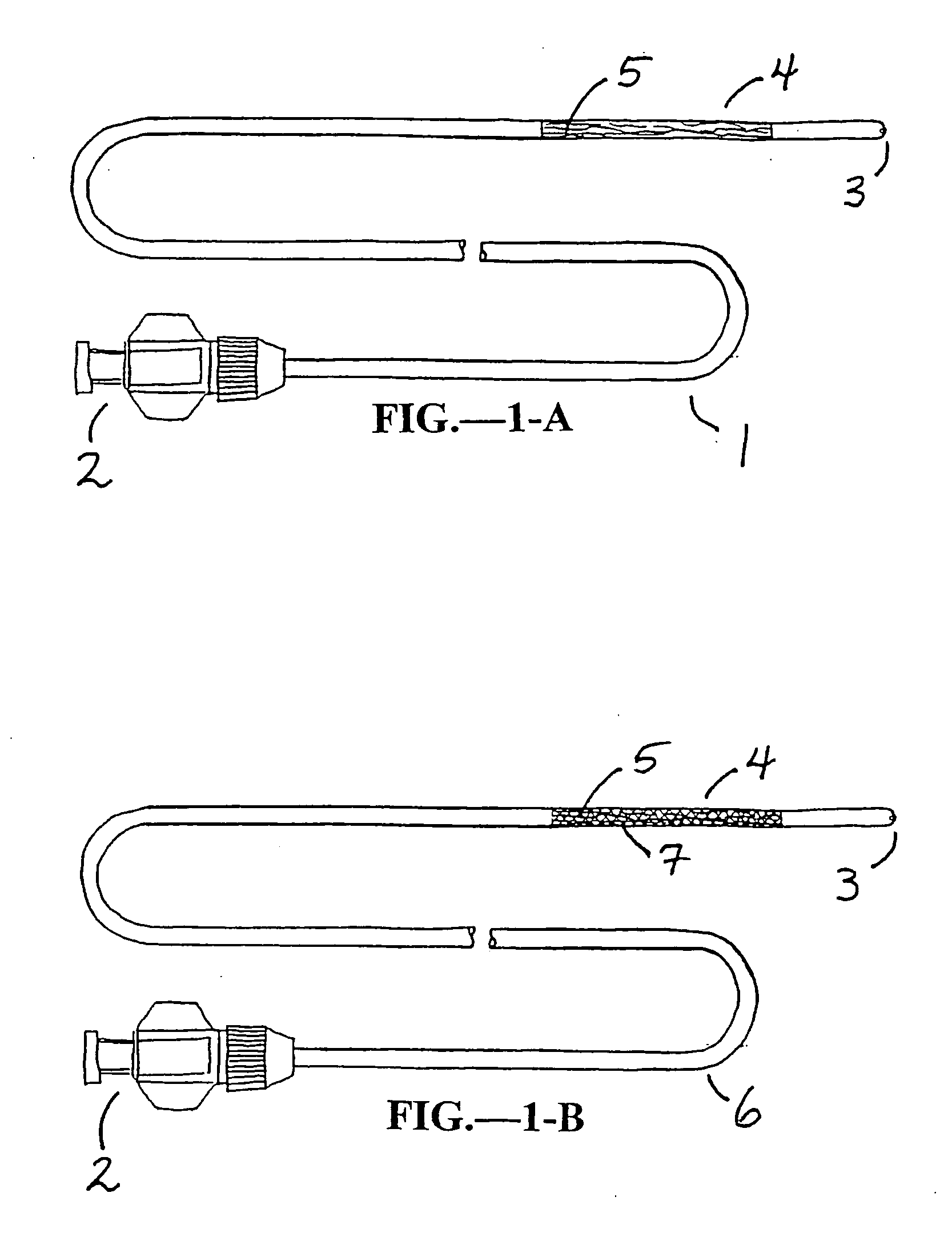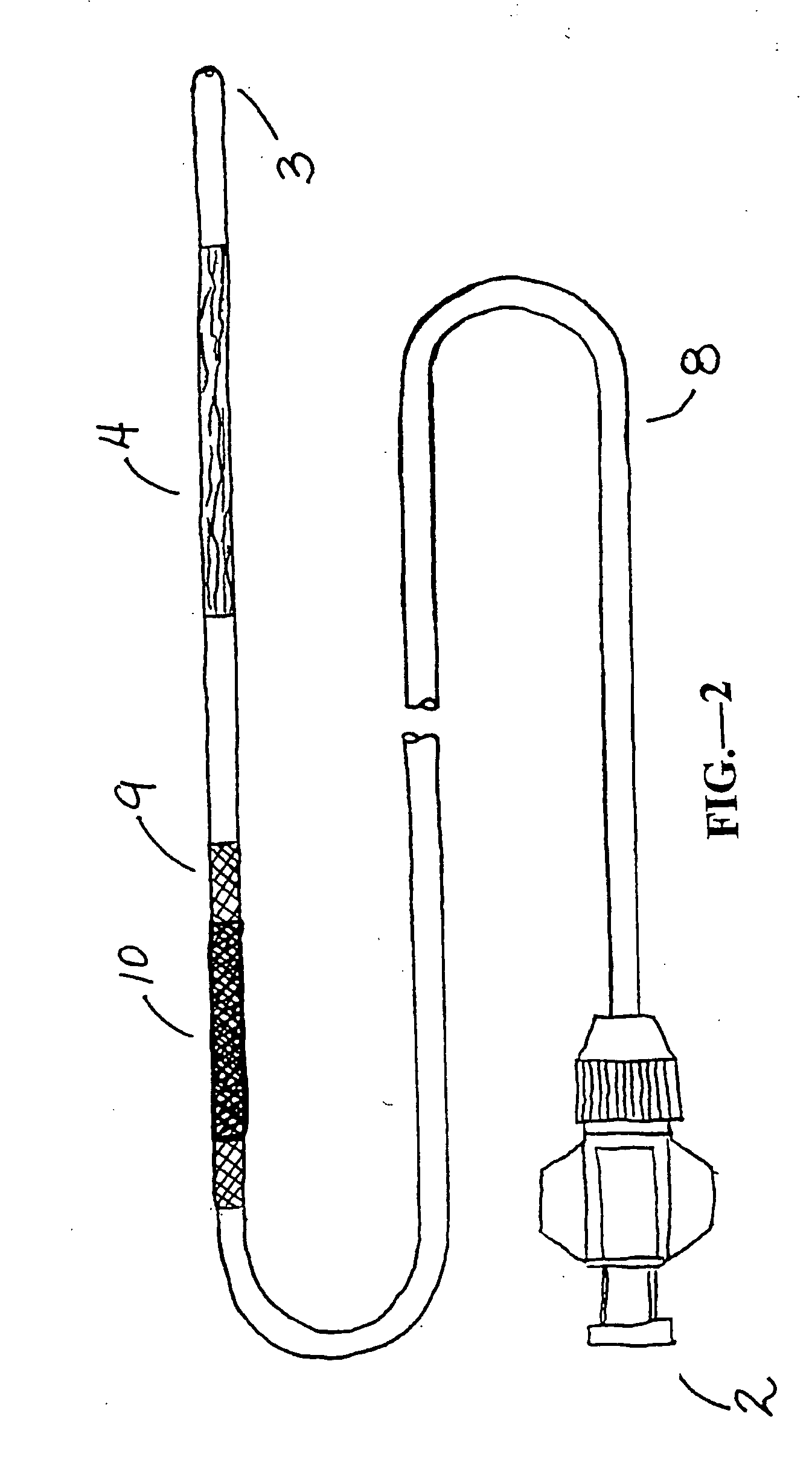Dilating and support apparatus with disease inhibitors and methods for use
a technology of dilating support and inhibitor, which is applied in the field of medical devices, can solve the problems of multiple balloon devices that are more than complicated, stent deployment requires a significant amount of time for inflation/filling and subsequent deflation/un-filling of balloons, and can only achieve limited success
- Summary
- Abstract
- Description
- Claims
- Application Information
AI Technical Summary
Benefits of technology
Problems solved by technology
Method used
Image
Examples
Embodiment Construction
[0047] The present invention is used for intervention into the tubular channels (arteries, veins, biliary tract, urological tract, gastrointestinal tract, stents, grafts, sinuses, nasopharynx, heart, ears, etc.) or hollow cavities (stomach, gall bladder, urinary bladder, peritoneum, etc.) of the body. Further, it may be used in iatragenically created passageways. It is particularly convenient to use in an environment of an operating room, surgical suite, interventional suite, Emergency Room, patient's bedside, etc. One preferred embodiment of this device is that the elongate, flexible shaft is inserted into the tubular channel or hollow cavity of the body usually through pecutaneous access or via a surgical incision. In the case of lumens that enter and exit the body naturally, the device may enter through one of those entry or exit paths (i.e. rectal opening, mouth, ear, etc.). Once the device is in the preferred location (that being where the narrowing or obstruction is located), ...
PUM
| Property | Measurement | Unit |
|---|---|---|
| Elasticity | aaaaa | aaaaa |
| Porosity | aaaaa | aaaaa |
| Bioabsorbable | aaaaa | aaaaa |
Abstract
Description
Claims
Application Information
 Login to View More
Login to View More - R&D
- Intellectual Property
- Life Sciences
- Materials
- Tech Scout
- Unparalleled Data Quality
- Higher Quality Content
- 60% Fewer Hallucinations
Browse by: Latest US Patents, China's latest patents, Technical Efficacy Thesaurus, Application Domain, Technology Topic, Popular Technical Reports.
© 2025 PatSnap. All rights reserved.Legal|Privacy policy|Modern Slavery Act Transparency Statement|Sitemap|About US| Contact US: help@patsnap.com



